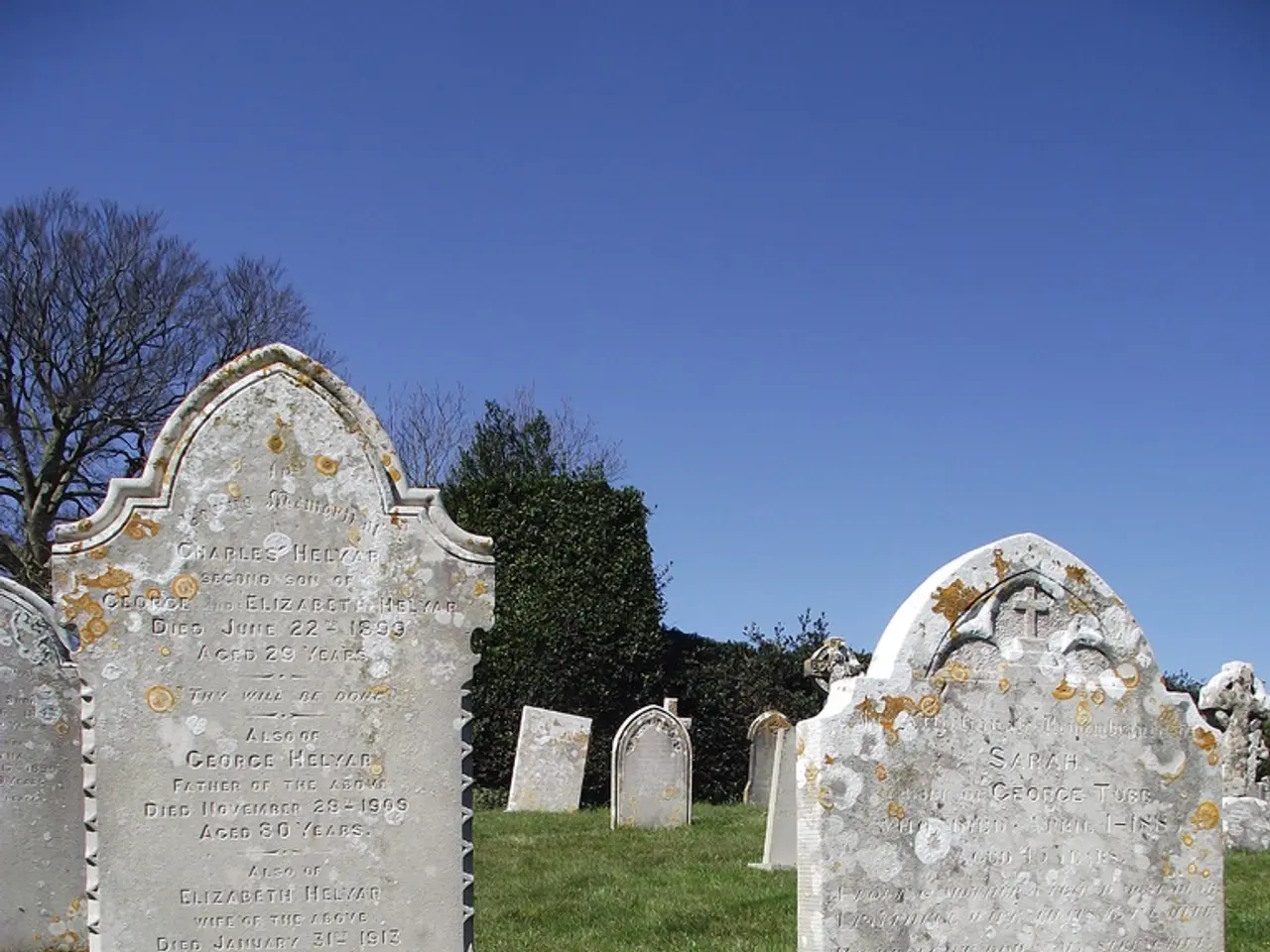Burial Space among Vines in Mainz-Laubenheim: Now Offers an Unique Final Resting Place among the Grapevines
In the heart of Rhineland-Palatinate, Mainz, often referred to as the Great Wine Capital, has introduced a novel and innovative burial concept - vineyard graves. This new practice, which allows for urn burials within a cemetery vineyard, is a testament to the region's deep-rooted wine-growing tradition and cultural importance of wine.
The grapevines at these unique gravesites are of the Sauvignon Gris variety, a disease-resistant grape variety that adds a touch of resilience to this unconventional burial ground. The vineyard graves were presented by Jeanette Wetterling, head of the Mainz economic operation, as an initiative aimed at offering a regional connection and a theme that had connected people during their lifetimes.
The city's economic operation, under Wetterling's leadership, has planted grapevines on a slope at the Mainz-Laubenheim municipal cemetery, creating a picturesque setting that marries the beauty of viticulture with the solemnity of remembrance. The new gravesites, known as "Schorlegraber" or urn row graves, are located in modern surroundings, reflecting Mainz's commitment to innovation.
Expansion plans for this unique practice include the integration of urn burials directly within vineyard grounds, a controlled development where grave sites coexist with vine stocks. This approach could influence how vineyards are viewed not only as agricultural lands but also as places of heritage and memory, potentially encouraging similar models elsewhere.
Mainz's vineyard graves are significant because they combine traditional burial customs with the longstanding viticultural heritage of the area, thus creating a site that honors both local wine culture and remembrance. The practice is unusual and innovative, marking a novel expansion of cemetery use that respects the land used for vineyards.
In addition to the vineyard graves, other projects are underway in Mainz's cemeteries. For instance, the West cemetery has seen the creation of 32 tree choice graves, 28 urn choice graves, and 144 urn row graves. Furthermore, Columbaria for an additional 120 urn niches have been built in Laubenheim, and four new trees for 32 tree choice graves have been planted in Laubenheim. Plans for further projects at the Hechtsheim cemetery have also been announced.
Wine has played a significant role in Mainz for thousands of years, and the city's economic operation manages the city's 13 cemeteries. More information about the Mainz cemeteries can be found on the city of Mainz's website. Since this summer, people can be buried among the vineyards in Mainz, offering a unique and meaningful way to honour both their love for wine and their connection to the city.
Ronny Pietsch, head of the cemetery and funeral department, stated that Mainz is open to new ideas and implements them promptly when they fit. This forward-thinking approach to cemetery management, combined with Mainz's rich wine heritage, makes the city a pioneer in innovative and culturally significant burial practices.
The vineyard graves in Mainz, a blend of local wine culture and remembrance, feature urn burials among the Sauvignon Gris variety grapes, epitomizing the city's home-and-garden and outdoor-living ethos. This unique burial practice, a fusion of tradition and modernity, underscores Mainz's lifestyle that values both wine and innovation.




